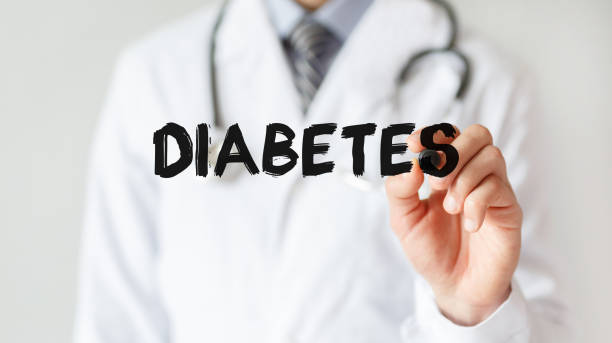What is Type 2 Diabetes?
Type 2 diabetes affects over 400 million people globally and accounts for about 90% of all diabetes cases. Unlike type 1 diabetes, your body still makes insulin, but it doesn’t use it properly. This leads to high glucose levels in your blood, which can cause serious health problems if not managed well.
Early Signs of Type 2 Diabetes You Shouldn’t Ignore
Common Signs of Diabetes
Recognizing the signs of type 2 diabetes early can help you get treatment faster and prevent complications:
- Increased thirst and frequent urination
- Unexplained weight loss despite eating normally
- Extreme fatigue and weakness
- Blurred vision that comes and goes
- Slow-healing cuts and bruises
- Frequent infections, especially skin infections
Less Common Signs of Diabetes
Some people experience these subtle symptoms:
- Tingling or numbness in hands and feet
- Dark patches of skin (acanthosis nigricans)
- Recurring yeast infections
- Increased hunger even after eating
Understanding Diabetes Mellitus Type 2
What Happens in Your Body?
In diabetes mellitus type 2, your cells become resistant to insulin. Think of insulin as a key that opens doors to let glucose into your cells. When you have type 2 diabetes, these “doors” become harder to open, leaving glucose stuck in your bloodstream.
Risk Factors You Should Know
Several factors increase your risk of developing type 2 diabetes:
- Being overweight or obese
- Family history of diabetes
- Age (over 45 years)
- Sedentary lifestyle
- High blood pressure
- Previous gestational diabetes
Effective Type 2 Diabetes Treatments
Lifestyle Changes: Your First Line of Defense
The good news about type 2 diabetes treatment is that lifestyle changes can be incredibly powerful:
Diet Modifications:
- Choose whole grains over refined carbs
- Eat plenty of vegetables and lean proteins
- Control portion sizes
- Limit sugary drinks and snacks
Regular Exercise:
- Aim for 150 minutes of moderate activity weekly
- Include both cardio and strength training
- Even walking after meals helps control glucose levels
Medications for Type 2 Diabetes
When lifestyle changes aren’t enough, your doctor might prescribe type 2 diabetes treatments including:
First-line medications:
- Metformin: Reduces glucose production in the liver
- Sulfonylureas: Help your pancreas make more insulin
- DPP-4 inhibitors: Keep blood sugar steady
Advanced treatments:
- GLP-1 receptor agonists: Slow digestion and reduce appetite
- SGLT2 inhibitors: Help kidneys remove excess glucose
- Insulin therapy: When other treatments aren’t sufficient
How to Monitor Your Glucose Levels
Daily Blood Sugar Monitoring
Keeping track of your glucose levels is crucial for managing type 2 diabetes:
Target ranges for most adults:
- Before meals: 80-130 mg/dL
- 2 hours after meals: Less than 180 mg/dL
- Bedtime: 100-140 mg/dL
Long-term Monitoring: The A1C Test
Your A1C test shows your average glucose levels over 2-3 months:
- Normal: Below 5.7%
- Prediabetes: 5.7% to 6.4%
- Diabetes: 6.5% or higher
- Treatment goal: Usually below 7%
Preventing Type 2 Diabetes Complications
Short-term Complications
Poor glucose levels control can lead to immediate problems:
- Diabetic ketoacidosis (rare in type 2)
- Hyperosmolar hyperglycemic state
- Severe low blood sugar from medications
Long-term Health Risks
Chronic high blood sugar damages your body over time:
- Heart disease and stroke
- Kidney damage (diabetic nephropathy)
- Eye problems including blindness
- Nerve damage (diabetic neuropathy)
- Foot problems and poor wound healing
Creating Your Diabetes Management Plan
Working with Your Healthcare Team
Managing type 2 diabetes requires a team approach:
- Primary care doctor or endocrinologist
- Registered dietitian
- Certified diabetes educator
- Eye doctor and podiatrist
Daily Management Tips
Morning routine:
- Check your blood sugar
- Take medications as prescribed
- Eat a balanced breakfast
Throughout the day:
- Monitor your glucose levels as recommended
- Stay hydrated with water
- Take medication with meals if needed
Evening habits:
- Log your blood sugar readings
- Prepare healthy meals for tomorrow
- Get adequate sleep (7-9 hours)
Diet and Nutrition for Type 2 Diabetes
Foods That Help Control Glucose Levels
Best choices for stable blood sugar:
- Leafy green vegetables (spinach, kale)
- Fatty fish (salmon, mackerel)
- Nuts and seeds
- Berries and other low-sugar fruits
- Whole grains in moderation
Foods to Limit or Avoid
These can spike your glucose levels:
- Sugary beverages and candy
- White bread and refined grains
- Fried and processed foods
- High-sugar fruits like watermelon
- Alcohol (discuss with your doctor)
Exercise and Physical Activity
Best Exercises for Diabetes Control
Aerobic activities:
- Brisk walking (easiest to start)
- Swimming (gentle on joints)
- Cycling or stationary bike
- Dancing or group fitness classes
Strength training:
- Use resistance bands
- Try bodyweight exercises
- Lift light weights
- Practice yoga or Pilates
Exercise Safety Tips
- Check glucose levels before and after exercise
- Carry glucose tablets for low blood sugar
- Stay hydrated during workouts
- Wear proper footwear to prevent injuries
When to See Your Doctor
Regular Check-ups
People with type 2 diabetes need regular monitoring:
- A1C test every 3-6 months
- Blood pressure and cholesterol checks
- Annual eye and foot exams
- Kidney function tests
Warning Signs to Watch For
Call your doctor immediately if you experience:
- Glucose levels consistently above 300 mg/dL
- Signs of infection that won’t heal
- Severe nausea or vomiting
- Difficulty breathing or chest pain
Living Well with Type 2 Diabetes
Mental Health Matters
Managing diabetes mellitus type 2 can be overwhelming. It’s normal to feel frustrated or worried sometimes. Consider:
- Joining a diabetes support group
- Talking to a counselor who understands diabetes
- Connecting with others who have similar experiences
Technology That Helps
Modern tools make diabetes management easier:
- Continuous glucose monitors
- Smartphone apps for tracking
- Insulin pens and pumps
- Telemedicine appointments
Frequently Asked Questions
Can Type 2 Diabetes Be Reversed?
While there’s no cure, some people achieve remission through significant weight loss and lifestyle changes. However, you’ll always need to monitor your health carefully.
Is Type 2 Diabetes Hereditary?
Family history increases your risk, but it doesn’t guarantee you’ll develop type 2 diabetes. Lifestyle choices play a huge role in prevention.
How Often Should I Check My Blood Sugar?
This depends on your type 2 diabetes treatment plan. Some people check once daily, others need multiple readings. Your doctor will recommend the best schedule for you.
Take Control of Your Health Today
Type 2 diabetes is a serious condition, but it’s also very manageable. With the right combination of type 2 diabetes treatments, lifestyle changes, and regular monitoring of your glucose levels, you can live a full, healthy life.
Don’t wait to take action. If you’re experiencing signs of diabetes, schedule an appointment with your healthcare provider. Early detection and treatment make all the difference in managing this condition successfully.
Remember, millions of people live well with diabetes mellitus type 2. With dedication and the right support, you can too. Start implementing these strategies today and take the first step toward better health.



